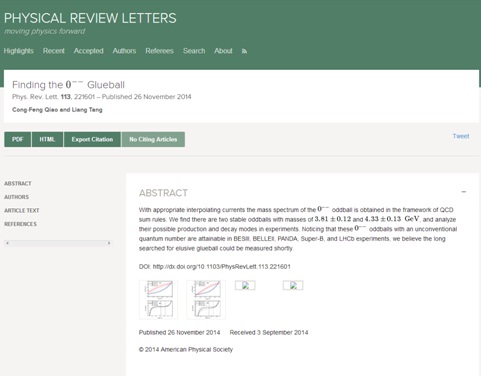-
You are here:
-
home

-
Research

-
UCAS Theoretical Progress in Glueball Detection
UCAS Theoretical Progress in Glueball Detection
-
Published: 2014-12-08
-
2382

They used quantum chromodynamics (QCD), which describes the interactions among gluons and quarks, to investigate the 0¯¯ oddball (where the 0¯¯ signifies the quantum number). They showed how to establish a connection between QCD calculations and the glueball’s properties, which they then used to evaluate the mass spectrum of the 0¯¯ oddball. Their results reveal the existence of two stable 0¯¯ oddballs with theoretical masses of 3.81 GeV and 4.33 GeV, as indicated by stable plateaus on the oddball’s mass curve. Unlike previous estimates of glueball masses, those for the 0¯¯ oddballs are of particular interest because they are not mixed with quark states.
Glueballs are made of elementary particles called gluons, which are one of the gauge bosons carrying the four fundamental forces. Gluons mediate the strong interaction, also called the color force, that binds quarks together as the glue, forming the protons, neutrons, and other particles which constitute matter. Although gluons are massless, the hypothetical glueballs that they form have been predicted to possess mass due to their interactions with each other.
Although experiments have found evidence for gluons since the late 1970s, there has not yet been experimental evidence for glueballs, due in part to lack of adequate understanding of glueball production and decay. One of the largest obstacles hindering detection of glueballs arises from the mixing effect between glueballs and hadrons in the normal quark model.
The result has also been reported in the physics news website Phys.org:http://phys.org/news/2014-12-long-searched-for-glueball.html
By Xia Yu
